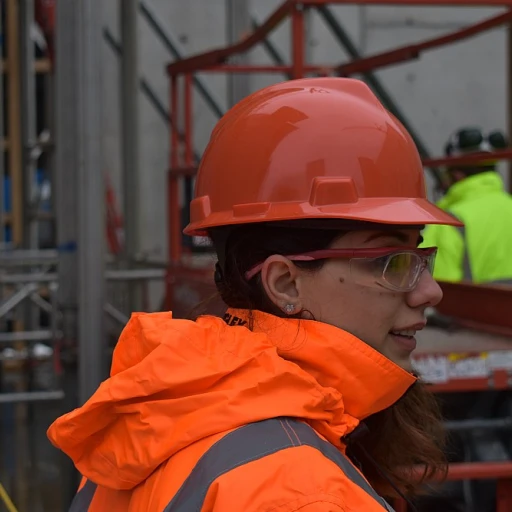Understanding the Role of Communication in Employee Retention
The Intrinsic Connection Between Communication and Retention
In the ever-evolving corporate landscape, understanding the intrinsic connection between communication and employee retention is pivotal for organizational success. At its core, effective HR communication is the linchpin that holds the workforce together, ensuring that employees feel valued, understood, and engaged. Organizations that successfully foster open and transparent communication are often rewarded with a loyal and motivated workforce, reducing turnover rates and enhancing employee satisfaction.
Communication acts as a bridge between employees and management, facilitating a two-way exchange of ideas, expectations, and feedback. This open channel ensures that employees are not only aware of organizational goals but also understand their role in achieving them. This understanding can significantly boost morale and retention as employees feel more connected to the company's mission and vision.
Moreover, a personalized approach to HR communication can further strengthen this bond. By tailoring messages to meet the diverse needs of the workforce, HR can ensure that each employee feels acknowledged and valued. For a deeper dive into making HR communication personal and its impact, you can visit a game-changing approach to personalizing HR communication.
As you explore crafting a communication strategy that truly resonates with employees, remember that the foundation lies in recognizing the unique role that communication plays in retention. From feedback loops to recognition programs, every aspect of HR communication can contribute to a nurturing and positive work environment.
Crafting a Communication Strategy that Resonates
Identifying Key Communication Channels
In today's dynamic workplace, identifying effective communication channels is vital to ensuring your communication strategy resonates with employees. The plethora of digital tools available means that selecting the right mix can be the key to unlocking strong connections. These channels could range from traditional emails to more interactive platforms like team collaboration tools and intranet networks.
Customizing Messages for Diverse Workforces
A one-size-fits-all approach doesn't cut it anymore. With increasingly diverse workforces, customizing your HR communication messages is crucial. Tailoring messages ensures that information is not only understood but also relevant to employees from different backgrounds, roles, and generations. When employees feel that communication speaks to them personally, they're more likely to engage and stay committed to the organization.
Keeping the Human Element in Digital Communication
Despite the rise of digital communication channels, maintaining the human touch is essential. Personalized messages, empathetic tone, and real-time interactions help in nurturing a sense of belonging and trust among employees. Being intentional about the language and delivery can foster a more inclusive work culture and contribute to greater retention rates.
Regular Communication as a Pillar of Trust
Regular and transparent communication builds trust. Employees who know what's happening within the organization are more likely to feel secure and valued. Establishing a predictable rhythm of communication, be it weekly updates or monthly newsletters, reinforces transparency and trustworthiness, ultimately reinforcing employee retention.
Crafting an HR communication strategy that truly resonates with employees involves thoughtful consideration of how messages are delivered and perceived. With the right channels, personalized messaging, and maintaining a human element, organizations are well on their way to fostering an environment conducive to strong employee retention."}
Leveraging Internal Communication for a Positive Work Environment
Fostering a Strong Workplace Culture through Communication
A thriving work environment is an essential part of retaining employees, and effective internal communication can play a pivotal role in shaping that culture. A workplace where individuals feel valued and heard is likely to see a substantial decrease in turnover rates.
To create a positive atmosphere, communication within the company needs to be consistent and transparent. Regular updates about company goals and achievements can bolster employee morale, while open channels that encourage dialogue can mitigate misunderstandings and resentment. By prioritizing transparent communication, organizations can ensure that employees feel united and informed.
Moreover, cultivating a sense of community through communication initiatives, such as team-building activities and collaborative projects, builds stronger interpersonal relationships among colleagues. This sense of belonging can foster loyalty and commitment, as employees become more attached to their team and the company's mission.
Additionally, it's important to personalize communication strategies to align with diverse employee preferences and backgrounds. Tailoring your approach to fit the unique dynamics of your workforce will not only enhance communication but also empower employees to contribute positively to the workplace culture.
Balancing Work Life and Communication
Creating Clear Boundaries Between Work and Personal Life
In the quest for high employee retention, it's essential to acknowledge the fine balance between work and personal life. This topic gains prominence as employees increasingly seek environments that respect their time outside of work. HR communication plays a pivotal role in addressing this balance effectively.
Setting clear expectations and boundaries through effective communication helps in reducing employee burnout and enhancing job satisfaction. It's imperative that HR teams communicate policies and expectations clearly, allowing employees to understand what is required of them without encroaching on their personal time.
Additionally, HR should foster a culture that acknowledges the importance of this balance. Encouraging managers to lead by example, promoting flexible work arrangements, and regular check-ins can demonstrate a company's commitment to work-life harmony. Regular updates and communication on resources and programs that support this balance can further solidify trust and loyalty among employees.
Moreover, crafting a communication strategy that aligns with this balance is essential. Seamless integration of work-life balance values into the company’s overall communication strategy enables employees to feel more connected and less overwhelmed, ultimately boosting their motivation and dedication to the organization.
An organization which prioritizes clear and effective communication in all aspects, especially in establishing work-life boundaries, positions itself as a preferred choice for top talent. Keeping channels open for discussing concerns, adjustments in work requirements, and highlighting resources available for stress relief or personal time management is crucial. By doing so, HR departments can significantly impact employee retention and contribute to a supportive workplace culture.
Engaging Employees Through Feedback and Recognition
Creating a Culture of Open Communication
To foster employee retention, it's crucial to develop a culture where open communication is the cornerstone. This environment empowers employees to express their thoughts and feelings, ensuring their voices are heard and valued. When employees feel recognized and appreciated, their sense of belonging to the company strengthens, often translating into increased loyalty and decreased turnover.
While implementing communication strategies, employers should focus on actively seeking employee feedback. This feedback can be gathered through surveys, suggestion boxes, or regular one-on-one meetings between employees and managers. Such initiatives not only provide insights into employee satisfaction but also spotlight areas for improvement. Feedback is a two-way street; responding to employee suggestions shows that their opinions are respected and can lead to tangible change.
Recognition also plays a pivotal role in boosting employee morale. Regularly acknowledging and celebrating employee achievements, whether through formal award ceremonies or informal shout-outs, can significantly enhance motivation. This recognition can be public or private, as long as it is sincere and timely. By appreciating employees’ contributions, organizations demonstrate their commitment to valuing team members, which helps in nurturing a workplace that retains talent.
Incorporating practices of feedback and recognition into the company's communication plan echoes the effectiveness of a well-crafted strategy described previously. By aligning these elements with robust communication measures, companies not only support employee satisfaction but also lay a solid foundation for retention. These efforts culminate in an engaged workforce that feels valued, contributing to a thriving organizational culture.
Utilizing Advanced Tools for Enhanced Communication
In the modern HR landscape, emerging technologies and sophisticated communication tools are vital in implementing successful retention strategies. By utilizing these advanced tools, companies can create an environment that fosters effective communication, ultimately enhancing employee retention.
One of the pivotal technologies enabling this transformation is the use of dedicated HR platforms. These platforms streamline communication processes, ensuring that messages are delivered efficiently and consistently across all levels of the organization. By having a centralized system, HR teams can tailor messages to specific departments or groups, addressing their unique concerns and making the communication feel more personalized and relevant.
Another innovative tool is the implementation of chatbots and AI-driven communication assistants. These tools can rapidly respond to employee inquiries, reducing the lag time that often leads to frustration and disengagement. By providing immediate feedback and support, employees feel heard and valued, which positively impacts their attachment to the company.
Moreover, data analytics play a crucial role in refining communication strategies. By analyzing patterns in employee engagement and feedback, HR teams can gain valuable insights into what types of communication are most effective. This analytical approach allows for continuous improvement in how messages are crafted and delivered, ensuring that communication remains impactful and resonates with employees.
Implementing retention strategies using these tools also involves training employees and managers on effective usage. Providing comprehensive training sessions and resources ensures that everyone is equipped to leverage these tools to their full potential, which in turn supports a more cohesive work environment.
While the integration of these tools does require an initial investment, the long-term results in terms of enhanced employee retention and satisfaction can be significant. By continually adapting and refining communication processes with the aid of advanced technology, companies can cultivate a culture of transparency, support, and recognition, all of which are key components in retaining top talent.








